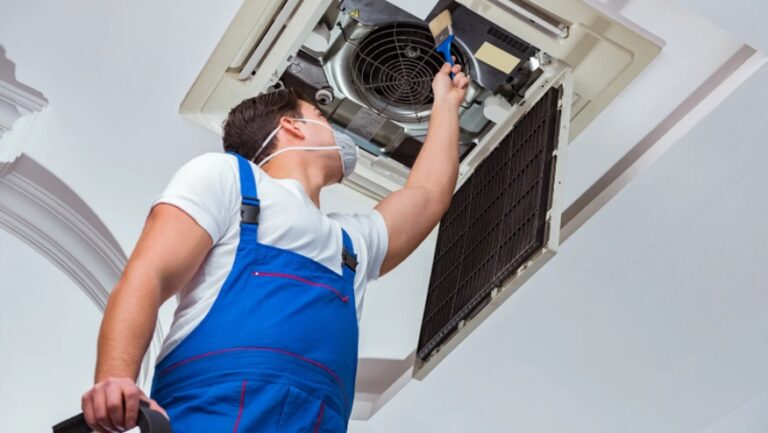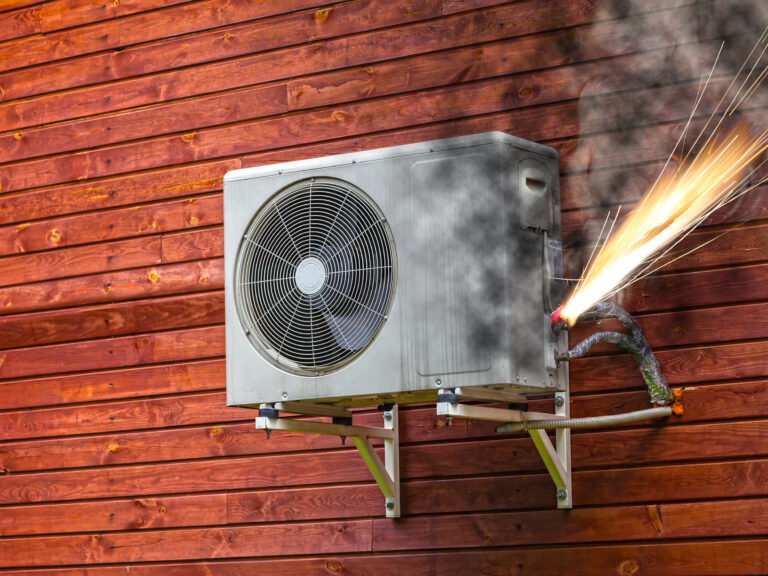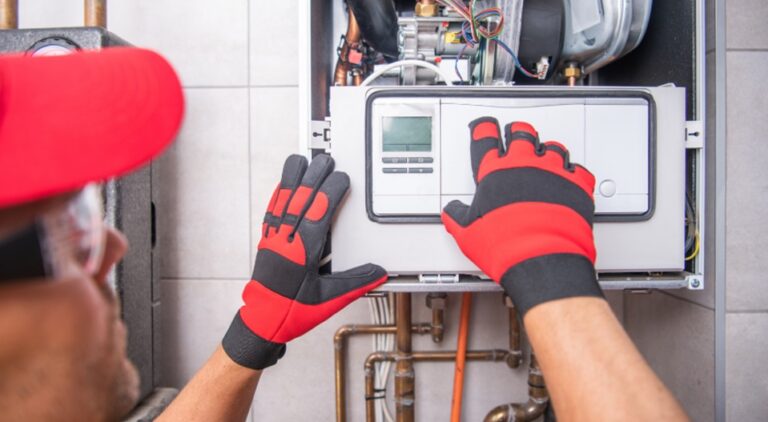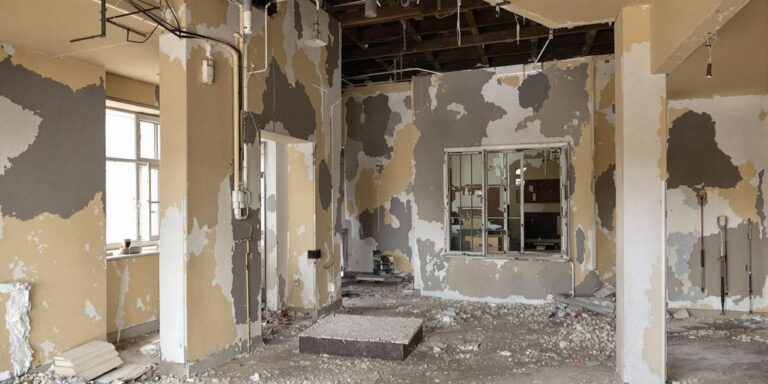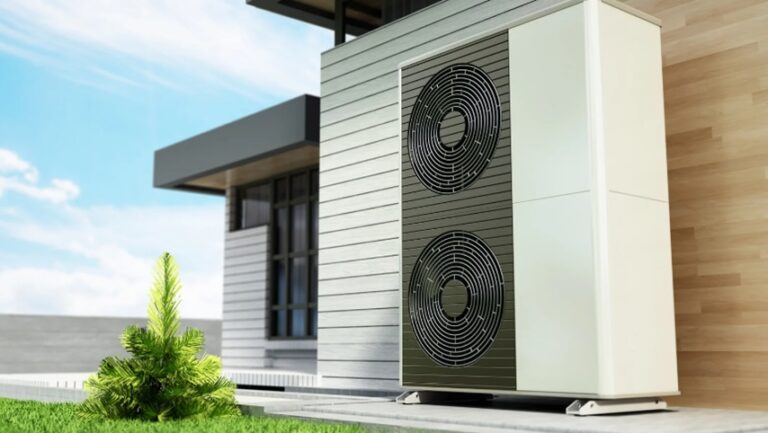What Is Asbestos and Why Is It Dangerous?
Asbestos is a naturally occurring mineral that was once widely used in construction and manufacturing due to its heat resistance and durability. However, it is now known to be highly dangerous. When asbestos-containing materials are disturbed, tiny fibers are released into the air. These fibers can be inhaled and become lodged in the lungs, leading to serious health issues over time. Diseases like asbestosis, lung cancer, and mesothelioma have all been linked to asbestos exposure. The danger lies in its invisibility—these fibers are microscopic and can remain suspended in the air for long periods, making them easy to unknowingly inhale.
Common Uses of Asbestos in Soundproofing Materials
In the past, asbestos was a popular choice for soundproofing because of its fire-resistant and noise-dampening properties. It was often mixed into acoustic ceiling tiles, wall insulation, and even certain types of drywall. If your home theater or soundproofing setup was installed before the 1980s, there’s a chance asbestos may be present. For example, some older drywall materials may still contain asbestos, as noted in asbestos in drywall. Knowing the age and origin of your materials is a crucial first step in assessing potential risks.
Health Implications of Asbestos Exposure
Exposure to asbestos is not something to take lightly. Once inhaled, the fibers can cause inflammation and scarring in the lungs, leading to long-term respiratory issues. The risk increases with prolonged exposure, but even short-term contact can be harmful. Symptoms like persistent coughing, chest pain, and shortness of breath may take years to appear, making early detection difficult. Vulnerable populations, such as children and the elderly, are particularly at risk because their respiratory systems are either still developing or already weakened. Protecting your home theater space from asbestos exposure is essential for maintaining a safe environment.
Historical Use of Asbestos in Soundproofing Applications
Why Asbestos Was Popular in Acoustic Insulation
Asbestos was once the go-to material for soundproofing due to its unique properties. It was cheap, readily available, and had excellent sound-absorbing capabilities. On top of that, asbestos was also resistant to heat and fire, making it an all-around “miracle material” for construction projects back in the day. This combination of features made it especially appealing for use in home theaters, recording studios, and other spaces where sound control mattered. However, the health risks associated with asbestos exposure were not well understood at the time, leading to its widespread use despite its dangers.
Types of Soundproofing Products Containing Asbestos
Many soundproofing materials from the mid-20th century contained asbestos. These included acoustic ceiling tiles, spray-on soundproofing coatings, and even insulation boards. Some older homes and buildings might still have these materials in place, posing a potential risk if disturbed. Identifying these products can be challenging, as asbestos fibers are microscopic and not visible to the naked eye. This is why testing is often necessary to confirm its presence.
Regulations That Phased Out Asbestos in Soundproofing
The dangers of asbestos became more widely recognized in the late 20th century, leading to stricter regulations and eventual bans on its use in many countries. In the United States, for example, the Environmental Protection Agency (EPA) began restricting asbestos use in the 1970s. By the 1980s, most asbestos-containing soundproofing products were phased out. Today, modern regulations focus on preventing exposure and ensuring that older materials are safely managed or removed. For those dealing with asbestos-related illnesses, exploring legal options for mesothelioma claims can provide some recourse.
Identifying Asbestos in Home Theater Soundproofing
Signs Your Soundproofing May Contain Asbestos
Homeowners often overlook the possibility that older soundproofing materials could contain asbestos. If your home theater was built or renovated before the 1980s, there’s a chance asbestos was used in the acoustic insulation. Look for brittle, crumbling materials or fibrous tape in walls and ceilings. These can be warning signs of asbestos presence. Additionally, any unmarked or aged insulation should be treated with suspicion.
Testing Methods for Asbestos in Acoustic Materials
Testing for asbestos isn’t something you should tackle on your own. Certified testing kits are available, but hiring a professional is often the safest route. They’ll take samples of suspect materials and analyze them in a lab. The process involves specialized equipment to detect even trace amounts of asbestos. Remember to never disturb materials you suspect might contain asbestos, as this can release dangerous fibers into the air.
Hiring Professionals for Asbestos Inspection
When it comes to asbestos, professional inspections are your best bet for peace of mind. Experts know where to look and how to handle potentially hazardous materials safely. They’ll inspect areas like wall cavities, ceiling panels, and even ductwork. Hiring a certified asbestos inspector not only ensures accurate results but also complies with legal requirements for handling asbestos. It’s a step worth taking to protect your health and your home.
Health Hazards Linked to Asbestos in Home Theaters
Respiratory Diseases Caused by Asbestos Exposure
When asbestos fibers are disturbed, they can become airborne and easily inhaled. These microscopic fibers lodge themselves deep in the lungs, causing significant damage over time. One of the most severe consequences of inhaling asbestos is mesothelioma, a rare and aggressive form of lung cancer. Other respiratory issues include asbestosis, a chronic lung disease that causes scarring of lung tissue, and an increased risk of developing lung cancer. For those exposed to loose asbestos fibers in enclosed spaces like home theaters, the risk is magnified. Asbestos exposure has been directly linked to these health conditions, particularly in environments where fibers are not properly contained.
Long-Term Risks of Asbestos in Enclosed Spaces
Home theaters often feature soundproofing materials that may contain asbestos, especially in older constructions. Over time, wear and tear or renovations can release asbestos fibers into the air. The long-term risks include not just respiratory diseases but also persistent health issues that might not show symptoms for decades. This latency period makes asbestos exposure particularly dangerous because individuals might unknowingly live with the risks for years. For example, factory workers exposed to raw asbestos during manufacturing faced similar long-term health challenges due to consistent exposure to airborne fibers. Mesothelioma and related diseases often emerge years after the initial exposure.
Vulnerable Populations and Asbestos Risks
Certain groups are more vulnerable to asbestos exposure. Children and elderly individuals are especially at risk because their respiratory systems are either still developing or weakened with age. Additionally, individuals with pre-existing respiratory conditions may experience more severe health effects from even minimal asbestos exposure. Enclosed spaces like home theaters can exacerbate these risks due to limited ventilation, allowing fibers to accumulate in the air. It’s crucial to address these risks proactively to protect these vulnerable groups from unnecessary exposure.
Modern Alternatives to Asbestos-Based Soundproofing
Safe and Effective Soundproofing Materials
In the world of soundproofing, there’s no shortage of modern materials that are both safe and effective. Asbestos-free options have become the standard, offering homeowners peace of mind without sacrificing acoustic performance. Many of these materials are designed with health and environmental safety in mind, ensuring they are non-toxic and durable. For example, recent advancements in sound-absorbing materials now focus on natural fibers, recycled composites, and even bio-based polymers. These innovations not only excel at noise reduction but also contribute to a more sustainable approach to construction.
Comparing Costs of Asbestos-Free Options
The cost of modern soundproofing materials can vary widely, but the long-term benefits often outweigh the initial investment. While some advanced acoustic solutions may seem pricey upfront, they save homeowners from potential health risks and costly asbestos removal down the line. Products like the UL-approved 6mm sound insulation membrane are not only affordable but also easy to install, offering a balance between price and performance. Homeowners should consider factors like durability, ease of installation, and overall effectiveness when comparing options.
Environmental Benefits of Modern Soundproofing
Switching to asbestos-free soundproofing materials isn’t just about safety—it’s also about protecting the planet. Many of today’s alternatives are made from recycled or sustainable resources, reducing the environmental footprint of home improvement projects. Materials like porous metals and innovative composites are gaining popularity for their ability to combine eco-friendliness with high acoustic performance. By choosing these modern solutions, homeowners can create a safe, quiet, and environmentally responsible living space.
Steps to Take If Asbestos Is Found in Your Home Theater
Immediate Actions to Minimize Exposure
Discovering asbestos in your home theater can feel overwhelming, but taking the right steps quickly is critical. The first thing to do is stop using the affected area immediately. Avoid disturbing the material, as this can release dangerous asbestos fibers into the air. Seal off the room as best as you can—close doors, cover vents, and avoid any activities that could create dust. If you suspect asbestos, resist the urge to clean or vacuum the space, as this can worsen the situation by spreading fibers.
Legal Requirements for Asbestos Removal
Once asbestos is identified, it’s important to understand the legal requirements for its removal. Federal and state laws regulate how asbestos must be handled, and these rules are designed to protect both homeowners and the environment. For instance, many jurisdictions require the involvement of certified professionals for testing and removal. Homeowners may also need to notify local authorities about the presence of asbestos before starting any removal process. To clarify your responsibilities, review your insurance policy to check if asbestos-related issues are covered. This can help you decide on the next steps for addressing the problem. File an asbestos-related claim if you believe your policy includes coverage for remediation costs.
Choosing a Certified Asbestos Abatement Company
Removing asbestos is not a DIY project. Hiring a certified asbestos abatement company is the safest option. Look for companies with proper licensing and experience in handling similar situations. During consultations, ask about their safety protocols, equipment, and disposal methods. A reputable company will provide a detailed plan, including timelines and costs. While it may seem expensive, professional abatement ensures the job is done safely, protecting your household from long-term health risks.
Legal and Regulatory Aspects of Asbestos in Soundproofing
Understanding Federal and State Asbestos Laws
Federal and state laws surrounding asbestos aim to protect public health by regulating its use, handling, and removal. The Environmental Protection Agency (EPA) enforces strict rules under the Clean Air Act, prohibiting most uses of asbestos in building materials. However, certain regulated uses, like research, are exceptions. Businesses are prohibited from importing, selling, or using asbestos-containing products unless they fall under these specific exemptions. State laws often add another layer of restrictions, ensuring compliance at a local level.
Penalties for Non-Compliance with Asbestos Regulations
Failing to follow asbestos regulations can lead to serious consequences. Penalties range from hefty fines to potential criminal charges, depending on the severity of the violation. For example, improper disposal of asbestos-containing materials or failure to notify authorities before starting abatement work can result in legal action. These penalties are designed to deter negligence and protect public safety.
How Regulations Protect Homeowners and Tenants
Asbestos regulations are not just about punishing violations—they also play a key role in safeguarding homeowners and tenants. These laws ensure that any asbestos removal or handling is done by certified professionals, minimizing the risk of exposure. Additionally, regulations mandate clear labeling of asbestos-containing products, so consumers can make informed decisions. By enforcing these rules, authorities help maintain safer living environments for everyone.
The Role of Professional Asbestos Abatement Services
What to Expect During an Asbestos Removal Process
Hiring professionals for asbestos removal is a critical step to ensure safety. The process begins with a thorough inspection to identify areas containing asbestos. Once identified, the team seals off the affected space to prevent contamination. Specialized equipment, like HEPA filters and protective gear, is used to safely remove the material. After removal, the area is cleaned and tested to confirm no asbestos fibers remain. This multi-step approach minimizes risks to both homeowners and workers.
Costs Associated with Professional Abatement
The cost of asbestos removal can vary depending on factors like the size of the affected area and the complexity of the job. Typically, homeowners can expect to pay anywhere from a few hundred to several thousand dollars. While this might seem steep, the expense is justified by the expertise and safety measures involved. For those in Northglenn, CO, professional abatement and remediation services are available to handle the job efficiently and safely.
Ensuring Safety During and After Removal
Safety is the cornerstone of any asbestos abatement project. Professionals take every precaution, from wearing protective suits to using sealed containers for disposal. After the removal, air quality tests are conducted to ensure the environment is safe for reentry. Homeowners should avoid entering the area until clearance is given. Following these steps ensures that the home remains a safe space for all occupants.
Preventing Asbestos Risks in Future Home Theater Projects
Selecting Certified Asbestos-Free Materials
When planning a home theater, choosing materials that are certified asbestos-free is a must. Ensuring your materials meet strict safety standards can save you significant trouble down the line. Look for products that explicitly state they are asbestos-free on their packaging or in their specifications. If you’re unsure, don’t hesitate to ask the vendor for documentation. Avoid older or second-hand materials, as they may pose a higher risk of containing asbestos.
Importance of Vendor Transparency in Material Sourcing
Transparency from vendors is key when sourcing materials for your project. Reputable suppliers should be able to provide clear, written guarantees that their products are free from asbestos. Ask direct questions about their sourcing practices and manufacturing processes. If the vendor hesitates or cannot provide proof, it’s a red flag. Prioritize vendors who openly share their certifications and testing results, ensuring safer choices for your home theater.
Incorporating Safety Checks in Construction Plans
A well-thought-out construction plan should include steps to minimize asbestos risks. Work with contractors who understand the importance of safety checks and are experienced in identifying potential hazards. Before starting construction, consider hiring a professional to inspect the site for any existing asbestos-containing materials. This step is especially important in older homes. If asbestos is found, you’ll need asbestos abatement to safely remove it before proceeding. In states like Ohio, regulations even require certified professionals for such tasks, as seen in asbestos abatement requirements.
Myths and Misconceptions About Asbestos in Soundproofing
Debunking Common Myths About Asbestos Safety
One of the biggest myths about asbestos is that it’s safe if undisturbed. While it’s true that intact asbestos materials are less likely to release fibers, even minor damage can cause harmful particles to become airborne. For example, asbestos sheet products used in older soundproofing setups can become hazardous if they crack or deteriorate over time. This misconception often leads homeowners to delay inspections or repairs, increasing the risk of exposure.
Misleading Claims About Asbestos-Free Products
Another common misunderstanding is that all modern soundproofing materials are automatically asbestos-free. Some products may still contain trace amounts of asbestos, especially if sourced from regions with less stringent regulations. It’s important to verify claims by checking certifications or opting for tested alternatives like fiberglass. However, even fiberglass has its own myths, as it’s often confused with asbestos due to its appearance and properties. Fiberglass, unlike asbestos, does not pose the same health risks but is still misunderstood by many.
Understanding the Real Risks of Asbestos Exposure
Many people underestimate the long-term dangers of asbestos exposure, believing that short-term contact is harmless. In reality, even brief exposure can lead to severe health issues like mesothelioma or asbestosis years later. This is particularly concerning in enclosed spaces like home theaters, where poor ventilation can trap fibers. Educating yourself about these risks and addressing potential asbestos sources promptly can make a significant difference in safeguarding your health.
The Science Behind Asbestos and Acoustic Insulation
How Asbestos Was Used to Enhance Soundproofing
Asbestos was once considered a “miracle material” for soundproofing because of its unique physical properties. Its fibrous structure allowed it to absorb sound waves effectively, reducing noise transmission in enclosed spaces. Manufacturers combined asbestos with other materials to create products like acoustic tiles, wall panels, and spray-on coatings. These products were widely used in theaters, recording studios, and even home soundproofing projects. The ability of asbestos to resist heat and fire further cemented its popularity in construction. However, its health risks were not fully understood at the time, leading to widespread use despite the dangers.
Scientific Studies on Asbestos and Sound Absorption
Research into asbestos’s soundproofing capabilities revealed that its fine fibers could trap and dissipate sound energy. This made it an ideal choice for spaces requiring noise control. Scientists also discovered that asbestos could be mixed with other materials to enhance acoustic insulation while maintaining durability. Unfortunately, later studies highlighted the risks of asbestos fibers becoming airborne, especially when materials were damaged or aged. These airborne fibers posed severe health risks, overshadowing the benefits of its acoustic properties.
Why Asbestos Is No Longer Considered Safe
The shift away from asbestos in soundproofing came after decades of research linking it to serious health conditions like mesothelioma and asbestosis. Once disturbed, asbestos-containing materials release microscopic fibers into the air, which can be inhaled and cause long-term damage to the lungs. Modern regulations have banned or severely restricted its use in most countries. Today, safer alternatives have replaced asbestos in soundproofing applications, offering similar acoustic benefits without the associated health hazards. For instance, vermiculite insulation, which sometimes contains asbestos, has been flagged as a potential risk during renovations or demolition. Learn more about vermiculite insulation risks to stay informed and safe.
Additional Websites
Sokolove Legal Group
Robert King Mesothelioma Law Services
Mesothelioma Fund
Tor Hoerman Law
Dolman Law
Mesothelioma Lawyer Center
Mesothelioma Help
Mesothelioma Hub
Weitz and Luxenberg
Lanier Law Firm
Mesothelioma.Net
Gori Law
LawFirm.com
Mesothelioma Hope
Mesothelioma Guide

